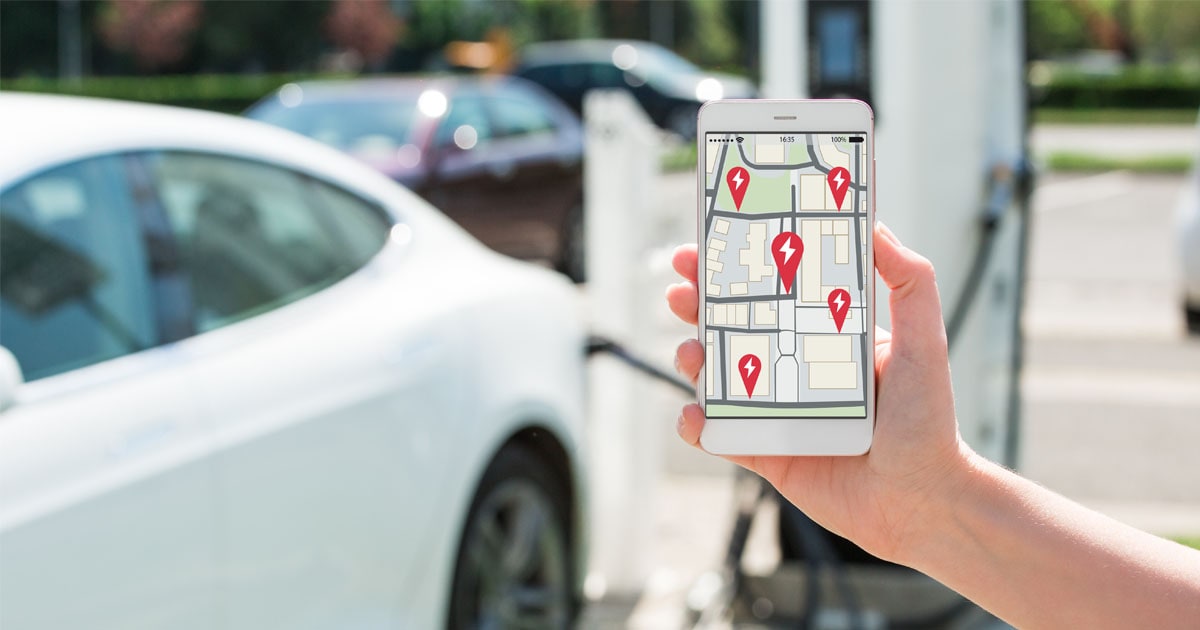
When someone says electric vehicles (EVs), you probably don’t think of TomTom — but you should. As the world goes electric, we must find ways to make living with EVs and using them in businesses as simple and effortless as possible. We need to rethink the experience and create something new, something that solves the problems of anyone or any business that uses electric vehicles, we need an excellent EV experience. Going electric is complicated for everyone, but it doesn’t have to be — and TomTom thinks its maps have the answer.
“Industries aren’t shaped in ways that work for electric vehicles. For example, historically, businesses in the auto world, like carmakers and filling stations, worked separately from one another. But for EVs to really take off, we need these kinds of businesses to work and learn together, with the OEMS, with carmakers, fleet operators and charging providers, as a group. We’re all moving together in this new direction, where there’s a lot of learning we all have to do,” Drew Meehan, TomTom’s Senior EV Product Manager, says.Despite the vast learnings ahead, we’re not that far from a world of well-functioning, easy-to-use EVs. The world will look a little different to what we’re used to, though, consisting of three main elements: EV makers, charging infrastructure providers and mapmakers.
This third element, which is where companies like TomTom come in, will be key in facilitating, enabling and delivering the EV experience. They will be the ones to connect traditionally siloed industries and help accelerate EV adoption by providing access maps and location tech — maps that hold solutions to the universal challenges that come with using electric cars, vans or trucks.
“Drew Meehan
TomTom Senior Product Manager, EV
Think expansively about EV
When talking about EVs, it’s easy and most common to focus on individual drivers, the consumer driver. It’s easy to relate to, and for any of us that drive, it’s a position we can easily imagine ourselves in. But when TomTom talks about the EV experience, it’s referring to something far broader than that one instance.
The challenges of going electric are universal — whether you’re a parent driving your kids to camp, a fleet manager looking after hundreds of electric vans or an EV charger firm looking for the best place to build your next charging location.
Even if the end-user changes, the challenges of going EV remain the same. Fleet managers care about using the most economical and range maximizing routes as much as the family going on a long-distance road trip does. Minimizing the time spent charging, finding compatible chargers on route and scheduling when to charge is just as important to EV delivery firms as it is to the lone driver who commutes 100 miles (161 km) a day. Any optimization in any of these parts of the EV experience benefits everyone.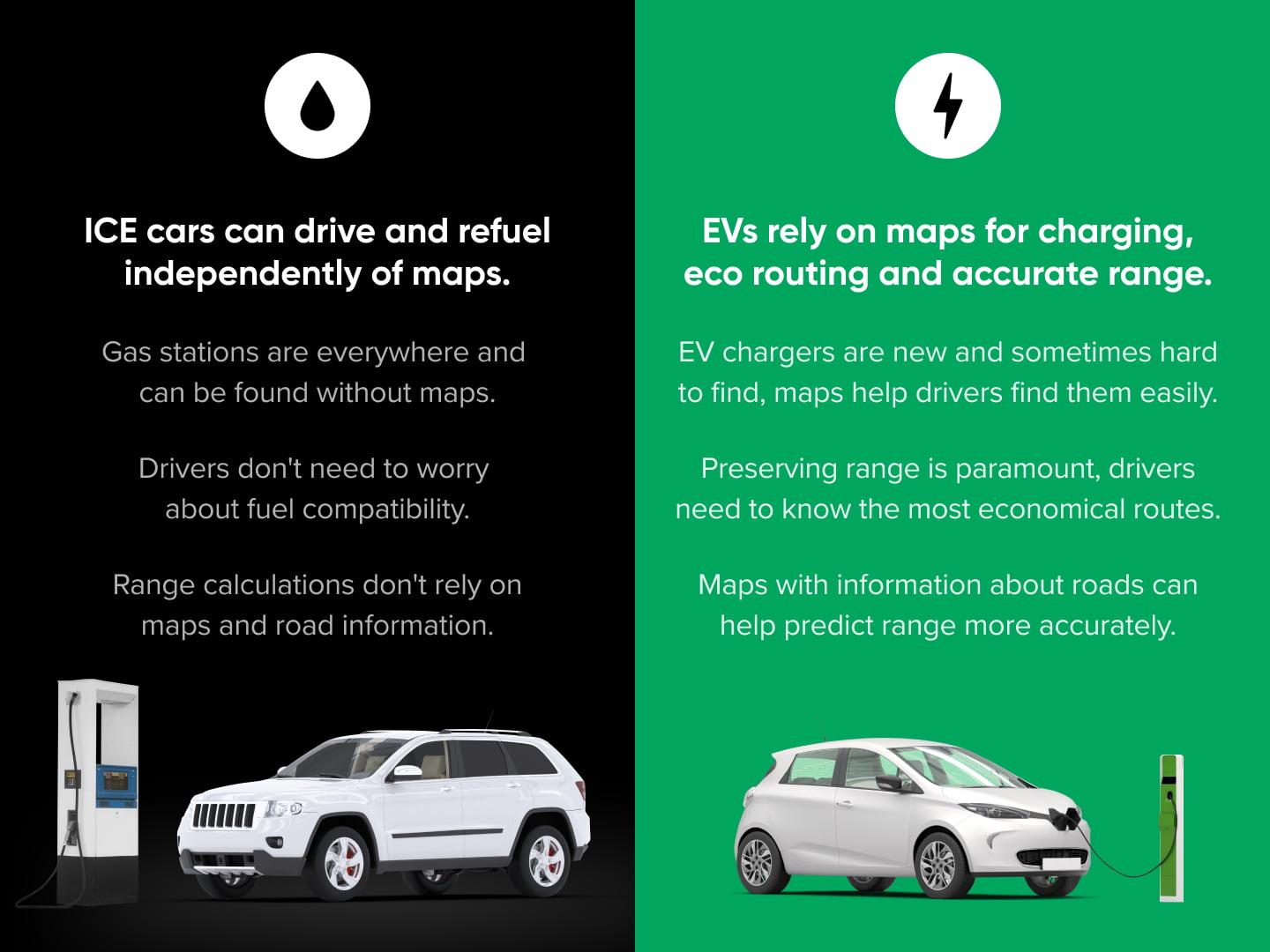 Gasoline-powered vehicles have been able to operate independently of maps for a long time. While maps certainly help getting people and things from A to B, they're not as needed as they are in EVs. Maps and EV-specific navigation are central to driving or operating electric vehicles, making mapmakers an even more central part of the experience. Not every combustion vehicle comes with a map, but every EV should.
Gasoline-powered vehicles have been able to operate independently of maps for a long time. While maps certainly help getting people and things from A to B, they're not as needed as they are in EVs. Maps and EV-specific navigation are central to driving or operating electric vehicles, making mapmakers an even more central part of the experience. Not every combustion vehicle comes with a map, but every EV should.Rethinking the vehicle experience
Broadly speaking, in the combustion engine world, the companies that provide services, infrastructure and hardware, the things that come together to build the experience, haven’t had to be that connected.
Drivers and managers of combustion engine (ICE) fleets benefit from highly developed infrastructure, high quality navigation and routing, normalized driving behaviors and the fact that fueling and routing needs can exist simultaneously without much bother. Driving an ICE vehicle takes little planning, and we’re all far too used to that.For EVs, the situation is quite different.“Driving an EV is very different to an internal combustion engine car when you could just fill up wherever you are or can easily find a gas station if required. It’s different for fleets and their managers too, where using fossil fueled vehicles they only need to fill up once a week, not the once or twice a day they might with EVs,” Balraz Singh, TomTom’s EV Specialist says. “Owning and working with EVs takes some getting used to. It takes quite a bit more planning and a shift of mindset.”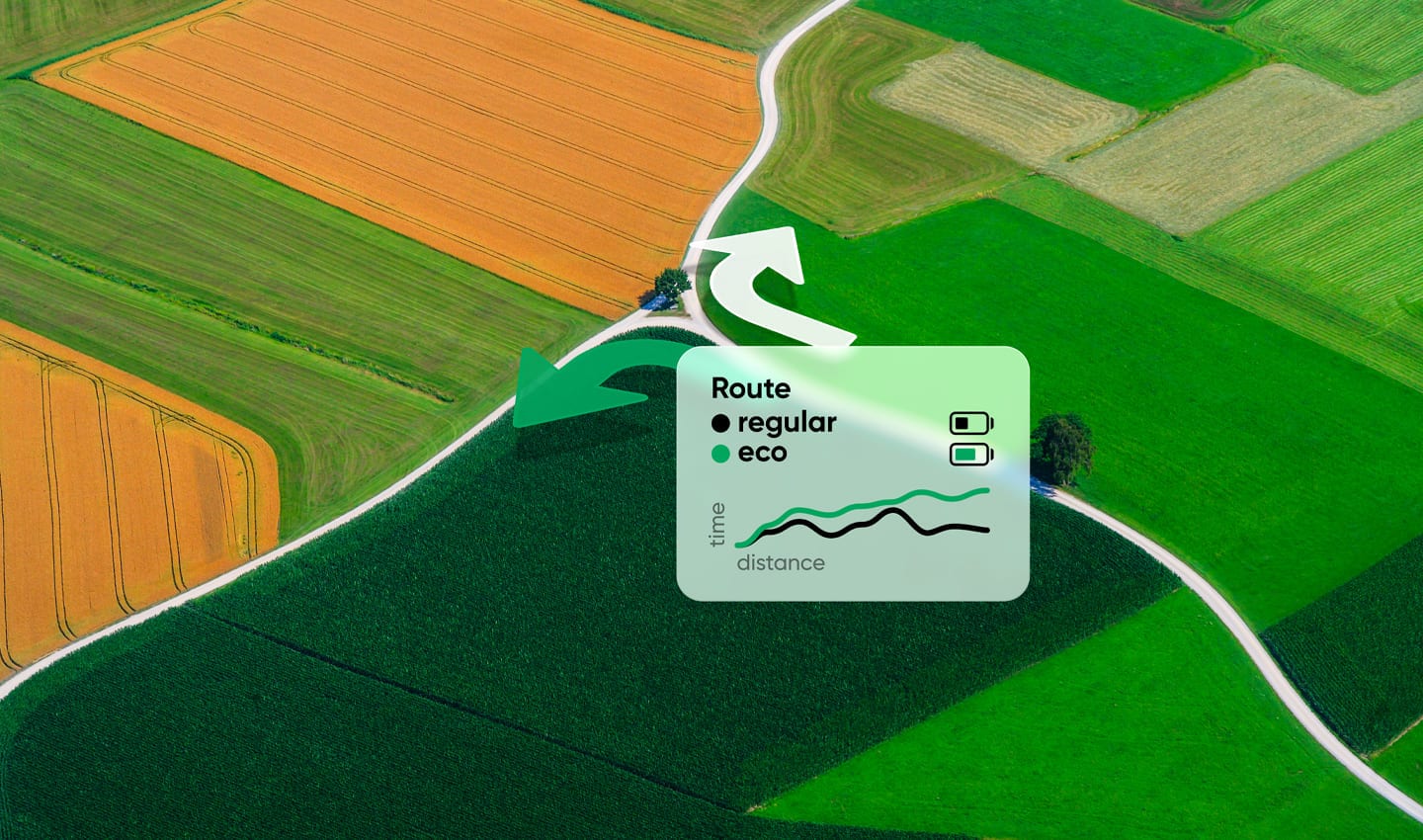 When maximizing your vehicle’s range, the route you take starts to matter more than getting to your destination as quickly as possible. As an EV driver, it might make more sense to arrive five minutes later but with 10% more battery. Knowing about road gradients, average travel speeds and real-time traffic can ensure EV drivers are always given the most economical route possible.Not only do EV drivers and fleets need to think about how to get from A to B in the most efficient way, one that will maximize their vehicles’ range, they need to think about where they can charge on route, how long that will take and if it’ll affect their schedule. They must also check if the charger is compatible with their vehicle, if it’s working, if they need a subscription account with the charging provider and how they need to pay. Depending on the length of charge, they might also want to find somewhere close by to grab some refreshments or use it as part of a longer legislated rest stop — if so, all this needs to be planned.The solution then is to connect everything together so that useful location information and context about charging, routing and range can find its way to the people that need to use it. Connecting all the dots will allow carmakers to provide drivers and fleet managers with economical EV-friendly routes based on the traffic of the day. It will allow for accurate range calculations based on the road ahead and the load of the vehicle. And it will help integrate charging into the everyday use of the EV, whether as part of delivery routes or personal commutes.If we can do those things, we can improve the EV experience, simplify it and make it much less stressful — as easy as, well, driving.The dream is for it to all be seamless and near invisible. “Good tech disappears,” Meehan says. It should just vanish into the background and leave users with no stress, worry or concern. “Great tech just works, and we never think about it again, like with satnavs, we put in our destination, we trust it and we get to where we need to go.” And that should be the case for EVs.
When maximizing your vehicle’s range, the route you take starts to matter more than getting to your destination as quickly as possible. As an EV driver, it might make more sense to arrive five minutes later but with 10% more battery. Knowing about road gradients, average travel speeds and real-time traffic can ensure EV drivers are always given the most economical route possible.Not only do EV drivers and fleets need to think about how to get from A to B in the most efficient way, one that will maximize their vehicles’ range, they need to think about where they can charge on route, how long that will take and if it’ll affect their schedule. They must also check if the charger is compatible with their vehicle, if it’s working, if they need a subscription account with the charging provider and how they need to pay. Depending on the length of charge, they might also want to find somewhere close by to grab some refreshments or use it as part of a longer legislated rest stop — if so, all this needs to be planned.The solution then is to connect everything together so that useful location information and context about charging, routing and range can find its way to the people that need to use it. Connecting all the dots will allow carmakers to provide drivers and fleet managers with economical EV-friendly routes based on the traffic of the day. It will allow for accurate range calculations based on the road ahead and the load of the vehicle. And it will help integrate charging into the everyday use of the EV, whether as part of delivery routes or personal commutes.If we can do those things, we can improve the EV experience, simplify it and make it much less stressful — as easy as, well, driving.The dream is for it to all be seamless and near invisible. “Good tech disappears,” Meehan says. It should just vanish into the background and leave users with no stress, worry or concern. “Great tech just works, and we never think about it again, like with satnavs, we put in our destination, we trust it and we get to where we need to go.” And that should be the case for EVs.Making, and mapping, something new
For this to happen, we’re going to need a few things: we’re going to need to connect in-vehicle systems with real-time information about charging points, we’re going to need EV routing algorithms that consider the specific EV being driven and its payload and we’re going to need a lot of fresh and constantly updated data about charging points and traffic.“The key is map data,” Singh says. “And at TomTom we’re sitting on a very large pile of data that we’ve accrued, and continue to accrue, over the years.”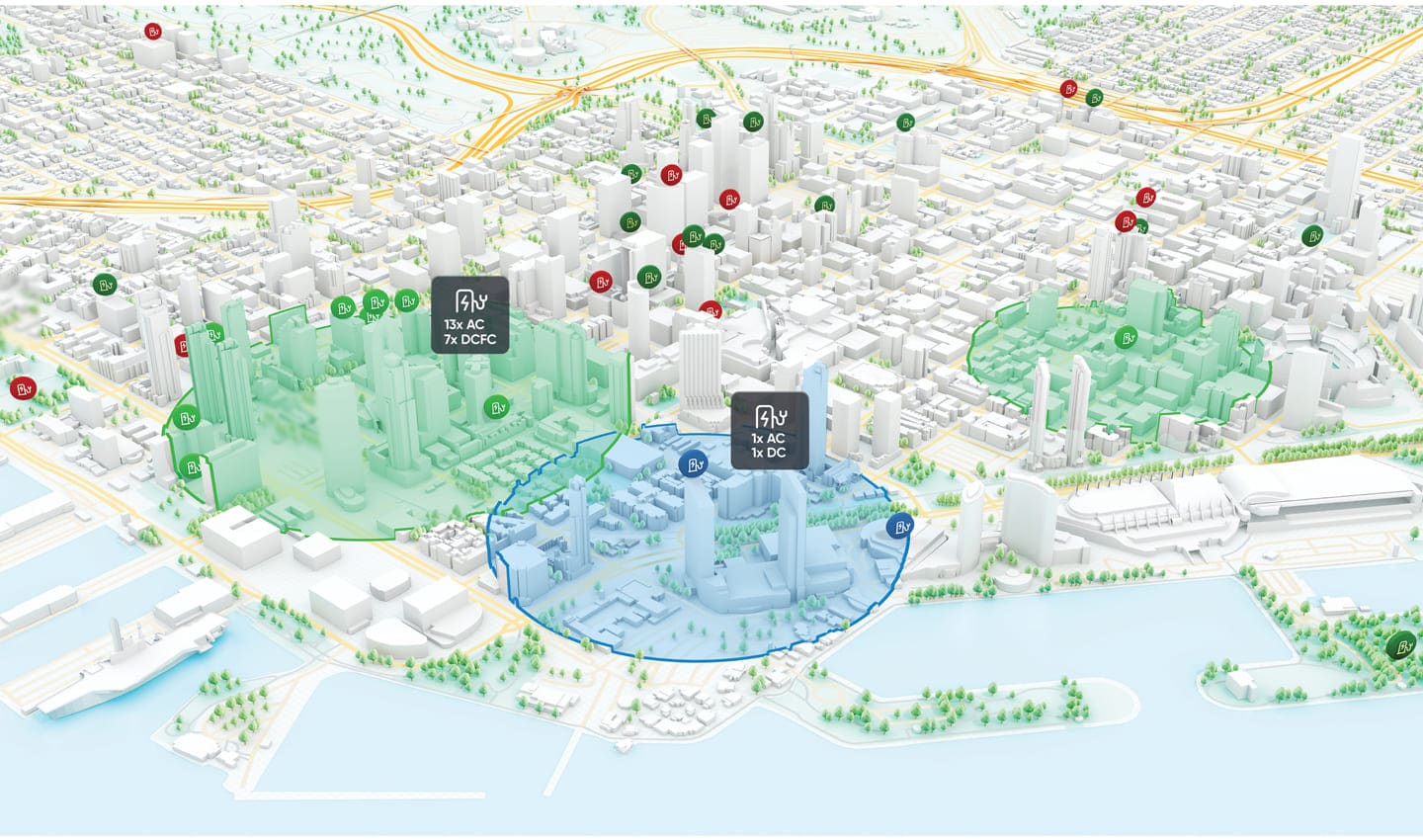 Maps and specific location data relevant to EVs is going to be key in make electric vehicles easy to live with. Drivers need to know where compatible chargers are, how much it’ll cost and if they’re available, in real-time. They need to trust this information too, so it needs to be very accurate and refreshed often.
Maps and specific location data relevant to EVs is going to be key in make electric vehicles easy to live with. Drivers need to know where compatible chargers are, how much it’ll cost and if they’re available, in real-time. They need to trust this information too, so it needs to be very accurate and refreshed often.
“The problem today is you have a lot of people competing with each other [to make EV infrastructure and tech]. I think there has to be some grown-up syncing, some consortium work to bring the data together,” Corinne Vigreux, TomTom’s Co-founder, said in a recent interview.
“Here’s where we see the opportunity for location technology and maps,” Singh says. “We [TomTom] can show the driver or fleet manager, the specific information on charging stations they’re looking for, like, is the plug type going to be compatible with their vehicle? Is the station occupied or not? Is the charger even working? How are they going to pay? With location data and maps, we can address the very specific needs of electric vehicles.”That’s all well and good, but data is only useful if it can be interpreted by or presented to drivers and fleet managers in ways that are easily understood, help solve their problems, are reliable and can be trusted. That’s where TomTom’s EV products and strengths as a mapmaker hold a potential solution.The experience as a collection of products and services
“Years ago, we realized we had all the ingredients for EV and the mapmaking capabilities to do something with them, but they weren’t all brought together into products that the driver, fleet manager or end user could make use of,” Meehan says. “That’s what we’re changing to realize our vision.”TomTom isn’t going to fix the challenges associated with EVs on its own. It’ll require collaboration between automakers, OEMs, system developers, eMSPs and charging station providers.
To help all those players come together, and to connect data to end-users, TomTom is combining all of its ingredients to provide EV specific data, routing algorithms and location technology in the form of APIs and SDKs to those that build systems for EV fleet management or in-vehicle infotainment platforms for EVs, so they can obtain key information that's important to those driving and using EVs.
Think of it like this: imagine a new charging location is built and put online in a place that was previously a charging desert (a place with no EV chargers for miles around). As soon as these chargers are opened, TomTom’s map can reflect that information in cars, vans and on fleet management platforms, so people can start using and benefitting from the chargers. As soon as new plug types are added, or a charger becomes available to use, that information can also be sent to those that need it. It'll keep us constantly aware of an ever evolving and growing charging network.
TomTom can be the connection between all sorts of data about the world that’s useful to those that use EVs — such as, road characteristics, real-time traffic and weather forecasts for EV range calculations and routing.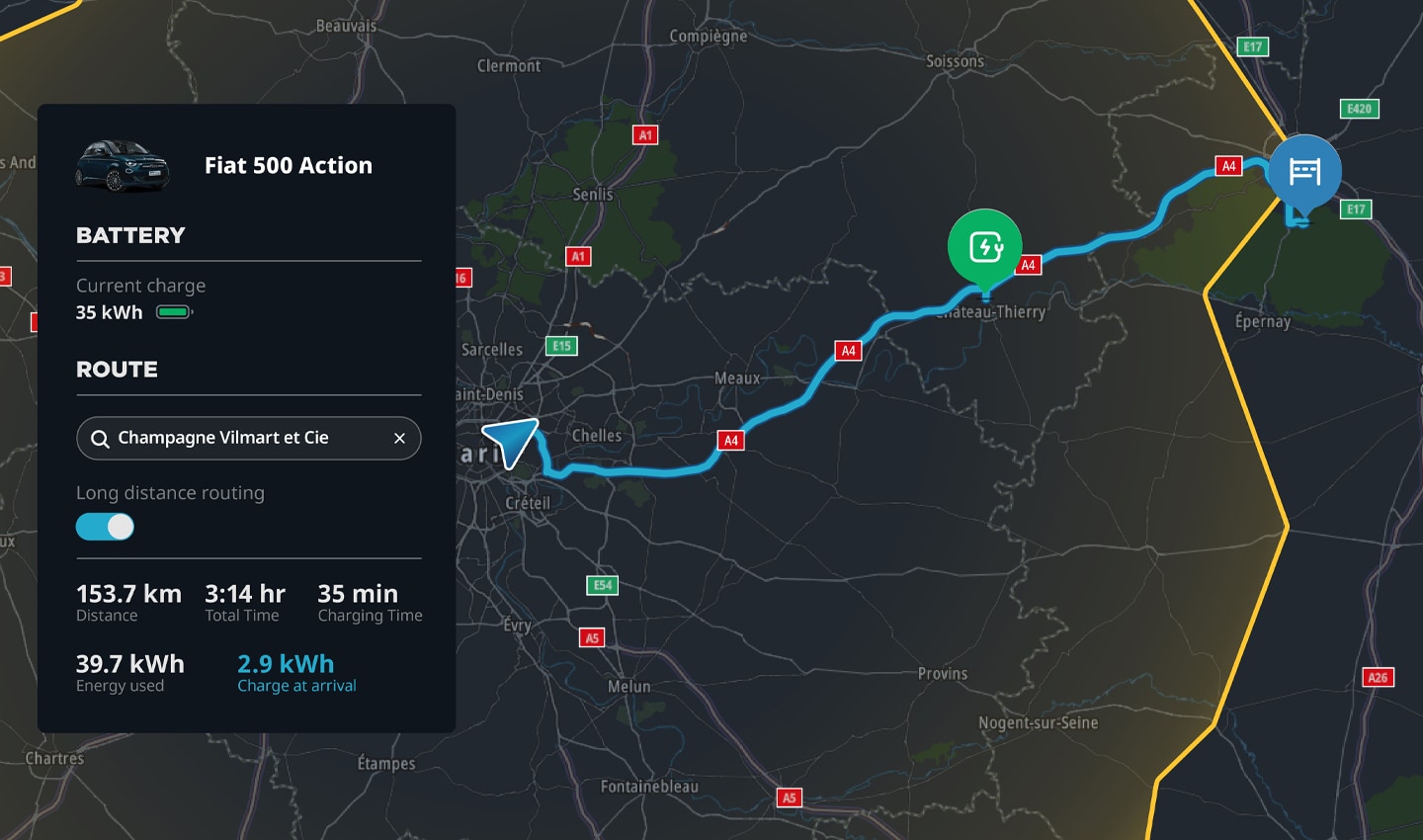 If you have 300 miles of range on your EV, that doesn’t mean you can drive 300 miles in every direction. How far you can drive also depends on the road ahead. Driving into the mountains is going to use more energy than driving steadily downhill. Range also depends on what car you have, as all EVs use energy at different rates. Range calculations need to be dynamic, considering all possible roads ahead and what vehicle you’re driving.
If you have 300 miles of range on your EV, that doesn’t mean you can drive 300 miles in every direction. How far you can drive also depends on the road ahead. Driving into the mountains is going to use more energy than driving steadily downhill. Range also depends on what car you have, as all EVs use energy at different rates. Range calculations need to be dynamic, considering all possible roads ahead and what vehicle you’re driving.
It’s these tools and services that bridge carmakers and charging infrastructure in a way that helps drivers and fleet managers now. We can maximize the use of the EVs and charging infrastructure we have now, alongside its further development. It can connect the in-vehicle experience and the charging experience, and for some, the fleet management experience, to create one, cohesive EV experience. It wouldn’t be possible without the mapmaker.
“We’re so well-placed at TomTom to do this. We’ve worked with OEMs for a long time, we know car integration, we know navigation, we know fleet and asset management and charging points are essentially just new forms of POI about which we gather information in real-time, to regularly update our map,” Meehan adds.
“We’re incredibly invested in EV at TomTom for this reason,” Singh explains. “TomTom is a mapmaker and location tech company that knows driving like no other. The EV experience has very specific requirements that are different from fossil fueled vehicles, all of which can be solved with dedicated maps, location data, specialist EV location services and relationships with carmakers, charging providers and e-mobility service providers.”The vision is clear, and TomTom is going to put the jigsaw puzzle together.“Drew Meehan
TomTom Senior Product Manager, EV
People also read
)
Forget worrying about range, charging anxiety is now the prime concern for EV drivers
)
Geospatial World Forum: Three reasons why now's the right time for collaborative mapmaking
)
Q&A: How is TomTom helping fix the pains of the EV industry?
)
EVs were outselling gas cars 100 years ago…what happened?
* Required field. By submitting your contact details to TomTom, you agree that we can contact you about marketing offers, newsletters, or to invite you to webinars and events. We could further personalize the content that you receive via cookies. You can unsubscribe at any time by the link included in our emails. Review our privacy policy. You can also browse our newsletter archive here.
)